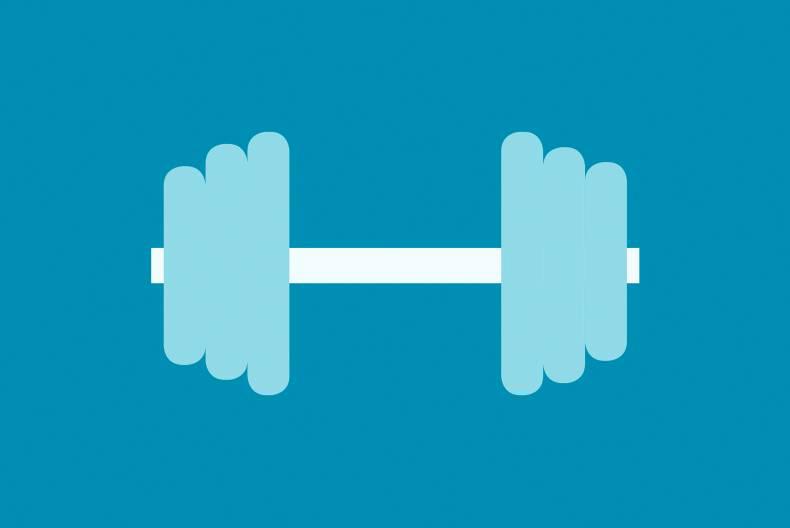The health and wellness trend has been growing steadily over the last decade. Increasing media coverage is drawing public attention to health issues facing society and increasing awareness of the risks associated with obesity and poor nutrition.
As a result, more and more people are taking their fitness and personal health more seriously and buying food and nutrition products that reflect this.
Previously, the primary consumers of sports nutrition products were professional elite athletes and bodybuilders. But now the market has widened as the casual or recreational customer such as the gym bunny, the goal-setter and the weekend warrior have started consuming these products. This has created an industry valued at more than $20bn, which is expected to grow to almost $38bn in value by 2020.
The value of the sports nutrition category has grown by 7% year-on-year in Ireland since 2012, and it is expected to continue to grow at the same rate over the next few years. This growth is primarily driven by recreational consumers motivated by feeling good and living a healthy lifestyle.
Consumer demand
As the customer base has widened, the industry has been forced to adapt to a wider array of consumer demands and concerns. For professional athletes, the greatest concern is product safety. These consumers want to be assured they are consuming a product that is natural, contains no banned substances and is approved for their sport.
Similarly, bodybuilders want the very best and most advanced products that have been proven to deliver the very best results. As the heaviest users of sports nutrition products, these consumers are more likely to buy in bulk.
Casual or recreational consumers with no ambitions to be a professional athlete are looking for a product that optimises their sporting experience in a healthy way. They desire products that are natural, safe and come with less technical, intimidating language that removes the bodybuilding stigma.
Another major obstacle for the industry is retaining these new customers. While elite athletes and bodybuilders are acclimatised to taking these products regularly, the casual customer has found that many products leave an unsavoury aftertaste. Improving taste is the greatest priority for improvement in nutrition products. Manufacturers have now started producing a wider range of flavoured options, particularly berried flavours that are mixed with water. The industry has also expanded the category by producing a broader range of products such as ready-to-go protein shakes, energy bars, protein gels and supplements.
Distribution has also had to widen into mainstream channels to reach the expanding customer base. At present, online accounts for the majority of sales at 35%, followed by nutrition stores and pharmacies, both channels accounting for 25% of sales.
The role of social media
Social media has certainly played an important role increasing the popularity of healthy living and regular exercise, with online fitness fanatics frequently posting updates on their fitness, latest exercise regime and new diet. As users browse through photos of their friends and colleagues online, image control has become increasingly prevalent.
Superfoods such as chia seeds, quinoa, kale and flaxseed have all moved from the niche market into the mainstream.
Playing on the health and wellness trend, technology companies have begun tailoring their latest products for the health-conscious buyer. At the touch of a button, users can download countless apps on health, fitness, nutrition, good food and exercise.
Apple has developed the Apple Watch, a device with a range of health-orientated capabilities including a built-in heart rate monitor, while Google has launched its own health-tracking platform called Google Fit.
The mobile health application market is estimated to be worth $6.4bn in 2015, and more than double that in 2016 when it is forecast to reach a value of $13.5bn.
The rise of the gym
Despite ever-increasing obesity levels, the number of people exercising, attending fitness centres and gyms has never been higher. Gyms as we know them didn’t exist until the 1970s and 1980s, when exercise became popular, although membership rates were initially very low. However, gym membership exploded from 2000 onwards. Regularly attending a gym used to be highly concentrated on the 18-34 age group, but the popularity has now spread out over all age groups, particularly with those over 50.
Impact
Health and wellness has never been so important. The dairy industry has transformed itself to meet this trend by developing ingredients and products from what was essentially a waste (whey) and turning it into an added-value product. While the market is growing at huge rate, the risk for businesses is that an external food or health scare could undermine an individual company’s growth. It is a relatively new category and brand loyalty is weak. The challenge will be to differentiate products in the noisy marketplace, while ensuring that correct labelling and independent science-based research are ongoing. The category will continue to become mainstream, which will affect margins as products move through the life cycle.






 This is a subscriber-only article
This is a subscriber-only article










SHARING OPTIONS: